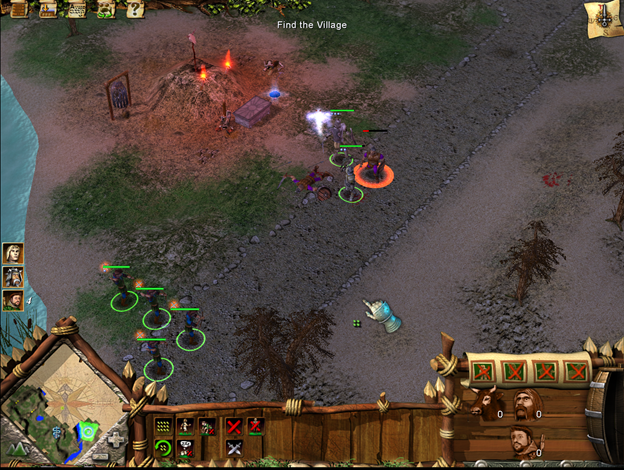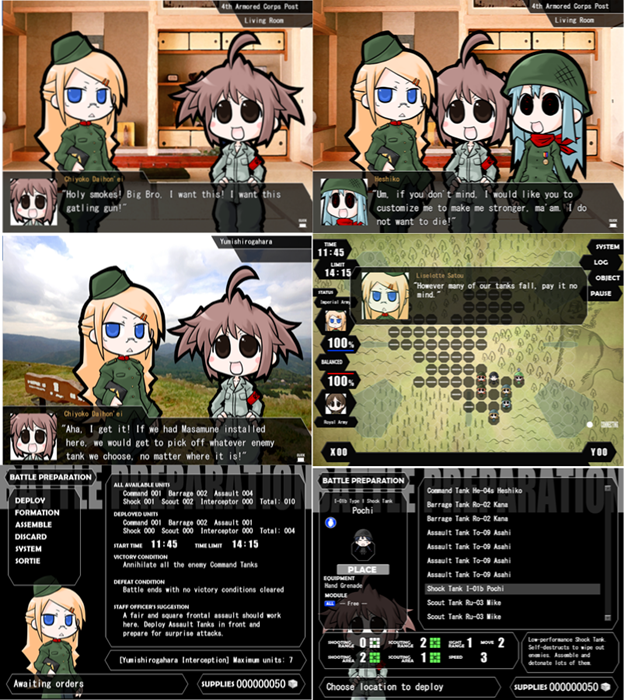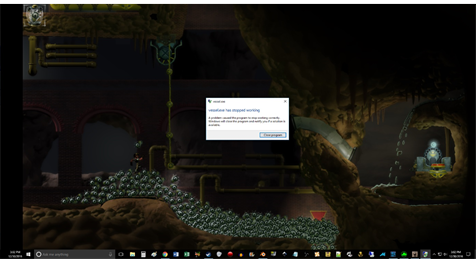As I sat down to play KnightShift and began analyzing the content in front of me, I found myself soaking in the pleasant scenery, easily identifiable characters and heroic music, and I thought to myself, “For an older game, this isn’t half-bad. I should probably put this in Tier Two.” I then froze, looking down at my hands in disgust–the same way George Bailey looked at his hand when he shook Mr. Potter’s in “It’s a Wonderful Life.” I realized in horror that this game… is garbage, and I had almost been tricked by it into thinking it was something good.
KnightShift is a hybrid RGP/RTS whereupon you control and (later on) can build units to use to fight against enemies in real-time, with a top-down view. Your hero units aren’t just stronger than the regular unit, but also possess the ability to gain levels as well as find and obtain better equipment. The game’s visuals are rather nice, with bright scenery and colorful characters. Controls and gameplay are mostly smooth, user friendly, and easy to understand. Characters are fully voice-acted, the action is relatively fast-paced, and the player knows exactly what’s going on at all times. So where’s the problem?
The problem is, is that this game is a trap. It traps you into thinking that you’re in a fantasy world with all the knights, monsters, “thou’s” and “thee’s,” and questing, but you’re not–you’re in a fantasy set, complete with fake wooden houses and cardboard cutouts. Fantasy is more than just looking like fantasy on the outside, it has to be fantasy–but you won’t find that in KnightShift. Prince John (the main character in the first campaign) is a Knight-Hero, simply because he needs to be in order to have a story. Wolves and bears attack you because they have to in order to create conflict. Wizards are only wizards because there needs to be somebody to cast spells. Townspeople have problems because there needs to be quests to waste your time, and divert you from the fact that the actual storyline of the game is shallow and nearly non-existent. In truth, once you have the mind’s eye to pierce through the colorful cut-outs and cheerful heroics, you realize that absolutely nothing in the game is happening at all–you’re simply on the rails of a rather flashy amusement ride that treats you like you are in danger, but you soon find that the ride’s restraints keep you from ever coming to any harm.
Unfortunately, the same is true for the gameplay and game mechanics as well. A true game has consequences, risks and strategy. KnightShift barely has any of these things. Actual fighting in the game comes down to clicking on an enemy and watching your heroes and any troops they have kill them. Then, you check your health bars and if you need to, you heal by sleeping if the bars are low. If you don’t feel like sleeping you can stand in a healing shrine. If you don’t feel like doing that, you can find the “extremely rare” blue mushrooms (NPC’s words, not mine) that pop up like daisies everywhere, that will heal you to full HP. There’s no technique, no skill, no brainpower used–simply click, watch die, move on. There’s only the barest minimum of micro in the game, which usually just comes down to “Are your archers in the back? Good. Are your heroes focus firing? Good. Did you pull back every so often to keep your melee units from getting surrounded (assuming they weren’t absolutely overpowering everything like they usually do)? Good.”
I understand every single RTS can’t be as refined and technical as Star Craft, but I’ve seen Diabloesques with more finesse than this piece of crap. At least in a Diabloesque I get the satisfaction of planning out how I’ll spend my levels, and what kind of character I want to build around certain skills. In this game, leveling up just pads your stats. It doesn’t change how you fight at all (if you can call clicking on a monster once “fighting”). Heck, you aren’t even allowed to manage your equipment–the game just automatically reads whether the equipment on the ground is better than what you hero currently has–if it is, it gets vacuumed up into the hero’s inventory and equipped. If not, it just gets left on the ground.
The only pseudo good thing about the game is at times, it has a bit of a sense of humor, and doesn’t try to take itself too seriously. Prince John is an overdone (for humor) Hero to a “T,” both in his tone and mannerisms of speech. NPCs are kind of silly and monsters are cartoony. However, I can only feel that this was just another attempt to hide the fact that there’s no game here whatsoever. Recently I complained that if you stripped everything away from Vessel, you’d be left in a room filled with switches and buttons, and you needed to figure out what order you needed to hit them all in order to leave. If you did the same thing with KnightShift, you wouldn’t even have that–you’d have a blank room with a single button that said “push to continue.”
There are just no consequences in this game at all. You can heal whenever you want. You will win, with the barest minimum of effort, whenever you want. You will never get lost, because the game prevents you from going in the wrong direction, through the use of closing doors, gates, and teleporters–and if ever somehow you could get lost, the game is always telling you what you need to do at the top of the screen, and often it even has where you need to go on the minimap.
This kind of gameplay and setting may appeal to some. I’ve met some gamers that don’t want to have to think when they play a game, they just want to be told that they are the hero, and they want to win over and over again with little challenge. I can’t respect that kind of desire from a gamer, but I will at least accept it. For me however, I will never be returning to this game. Borrowing the words of Egoraptor from his Sequelitis Zelda review pretty much sums it all up for me. Knighshift is a “predictable time-consuming mess, that asks you not of your sense of adventure, or even your wit, but instead of your ability to listen and follow directions,” and as such, it deserves no more of my time.

Steam link


